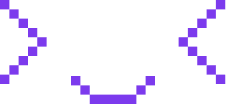Table of Contents
- Day 1: Setting Up Python
- Day 2: Python Basics
- Day 3: Control Structures
- Day 4: Functions and Modules
- Day 5: Working with Strings
- Day 6: Lists and Dictionaries
- Day 7: Tuples, Sets and Comprehensions
- Day 8: File Handling
- Day 9: Error Handling
- Day 10: Object-Oriented Programming in Python
- Day 11: Inheritance and Polymorphism
- Day 12: Working with Modules and Packages
- Day 13: Introduction to GUI Programming
- Day 14: Working with Databases
- Day 15: Web Scraping with Python
- Day 16: Introduction to Data Analysis with Python
- Day 17: Machine Learning Basics
- Day 18: Working with APIs
- Day 19: Building Python Projects
- Day 20: Final Tips and Resources
- Resources for Reference
- Conclusion
- FAQs
How to Learn Python in 20 Days: An Honest Experience Guide
Embark on a 20-day Python learning journey, mastering everything from basics to advanced topics. Build projects, access resources, and do so much more!
Python is a popular high-level programming language robust and used for various purposes, ranging from web development to data science. It's known for its readability and versatile syntax which resembles the English language. Its growing popularity within various sectors implies that learning Python can open doors to numerous exciting opportunities.
Below is a roadmap of all the topics you need to chronically cover to become a great python intellect.
Day 1: Setting Up Python
On the first day, begin by installing Python on your machine. Select an integrated development environment (IDE) such as PyCharm or Jupyter Notebook, which can streamline your coding experience by offering code suggestions, organization, and debugging tools.
Day 2: Python Basics
Your journey with Python starts with understanding variables, data types, operations, and operators. Master the specifics of integer, string, and list data types, and get comfortable with simple operations like addition, subtraction, and multiplication.
Day 3: Control Structures
Delve into the world of conditional structures with if, elif, and else statements. Understand looping mechanisms like for and while loops, which aid in performing repetitive actions in a streamlined way.
Day 4: Functions and Modules
Functions are a way of arranging your code into reusable pieces. Gain insights into how to define and call functions. Also, learn how to separate your code into different modules for better organization and reusability.
Day 5: Working with Strings
Process text data by learning about strings and their properties. Manipulate and format strings through different methods and functions like slicing, concatenating, and formatting.
Day 6: Lists and Dictionaries
Explore list data structures to store collections of data. Dictionaries, another useful data type, make storing and accessing data with a key, a breeze.
Day 7: Tuples, Sets and Comprehensions
Day seven introduces you to tuples and sets, and other ways of managing collections of data. Python's list comprehensions provide you with a succinct way to create lists.
Day 8: File Handling
Grasp critical skills for interacting with external data sources. You will learn how to read data from files, write data to files, and manage file systems.
Day 9: Error Handling
Learn about exception handling to manage errors that might occur in your programs gracefully. The use of try-except blocks will ensure your programs run smoothly without crashing.
Day 10: Object-Oriented Programming in Python
Understand the concepts of classes and objects, pillars of object-oriented programming (OOP). Learn about inheritance and polymorphism to make your code more modular and manageable.
Day 11: Inheritance and Polymorphism
Explore the concept of inheritance in Python, which allows for the creation of new classes that reuse attributes and behaviors of existing classes. Additionally, understand the concept of polymorphism and its application to create flexible and scalable code.
Day 12: Working with Modules and Packages
Learn about creating and importing modules, and the importance of packages for organizing, distributing, and deploying functionality to be shared among different projects.
Day 13: Introduction to GUI Programming
Delve into the basics of GUI programming in Python to create interactive user interfaces. Familiarize yourself with libraries such as Tkinter or PyQt for building visually appealing applications.
Day 14: Working with Databases
Gain an understanding of database connectivity and how to use SQL with Python. You will learn how to interact with databases, execute queries, and handle data retrieval, modification, and deletion.
Day 15: Web Scraping with Python
Explore the world of web scraping, an essential skill for extracting and manipulating data from websites. Discover libraries such as BeautifulSoup and Selenium that facilitate web scraping in Python.
Day 16: Introduction to Data Analysis with Python
Gain insights into data analysis with Python, including basic data manipulation and visualization. You will start working with powerful libraries such as NumPy and Pandas for efficient data processing.
Day 17: Machine Learning Basics
Understand the fundamentals of machine learning and its application using Python. Explore libraries like scikit-learn and TensorFlow to grasp the principles of machine learning and its implementation.
Day 18: Working with APIs
Learn the basics of working with APIs in Python and understand how to integrate them into your projects. Explore popular libraries like requests to make HTTP requests and interact with web APIs.
Day 19: Building Python Projects
Select and plan a project that aligns with your interests and newly acquired skills. Get familiar with best practices for project development, including structuring, documentation, and testing.
Day 20: Final Tips and Resources
Explore additional resources for continuous improvement in Python programming, such as online courses, forums, and open-source projects. Gain valuable tips for staying updated with the latest trends and advancements in the Python ecosystem.
You can easily find all the information you will ever need on these topics on Youtube and the Internet! To make learning easier, you can use Merlin Chrome Extension. You can use its Youtube Summarizer to make immediate notes of all the youtube videos. You can use these as notes. Or you can use it as learning references and just skip watching youtube videos all together!
You can also use Merlin’s Blog Summarizer. It will give you easy to understand and detailed overviews of the websites and blogs you’ll read for these topics. It will help you make notes easily to go over.
Resources for Reference
Conclusion
By following this structured learning path, you will have gained a solid foundation in Python programming, setting you up for success in leveraging Python for various applications and paving the way for further advanced learning in the field.
FAQs
1. Why Python for programming?
Python's readability, versatility, and broad applications make it an ideal choice for both beginners and experienced developers across diverse fields.
2. How does Python benefit data science careers?
Python's robust libraries, including NumPy and Pandas, coupled with its compatibility with machine learning frameworks like scikit-learn and TensorFlow, make it essential for efficient data manipulation and analysis in data science.
3. What resources aid continuous Python learning?
Online courses, forums, open-source projects, and tools like the Merlin Chrome Extension, offering YouTube summarization and blog overviews, empower learners to stay updated and advance their Python skills.
Experience the full potential of ChatGPT with Merlin


Kalpna Thakur
Our marketing powerhouse, crafts innovative solutions for every growth challenge - all while keeping the fun in our team!